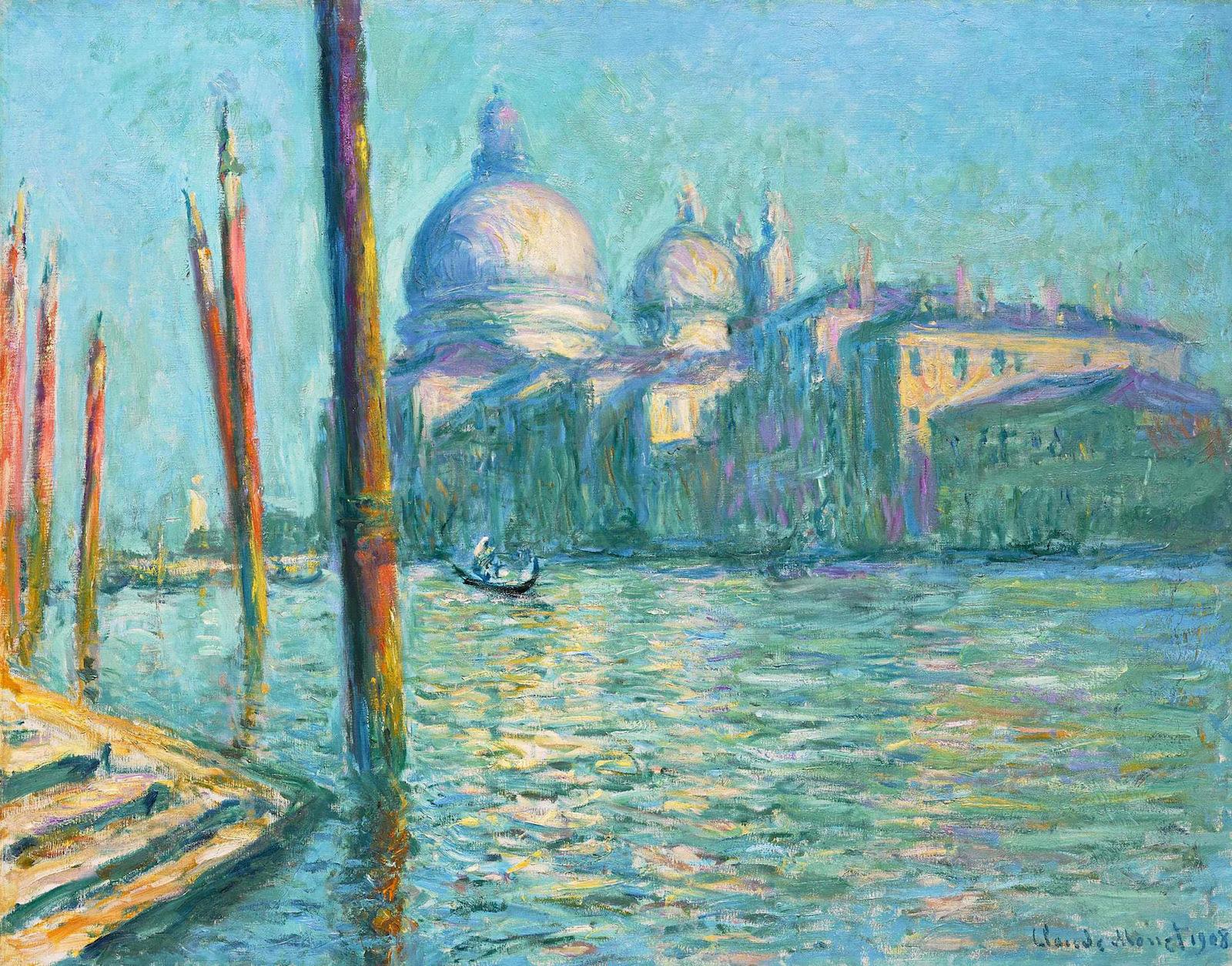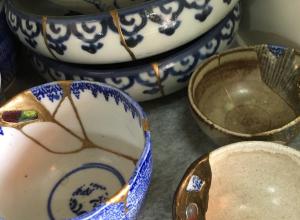
Claude Monet, Le Grand Canal, 1908.
NEW YORK – More than 100 years following Claude Monet’s first and only visit to Venice, which produced a remarkable series of 37 paintings capturing the city’s inimitable views, Le Grand Canal et Santa Maria della Salute will return to the city on 20 April for a special exhibition at The Gritti Palace in celebration of the Venice Biennale, before appearing at auction as a star lot of Sotheby’s Modern Evening Auction in New York on 17 May.
Prior to its special presentation in Venice, Le Grand Canal will embark on a global tour, stopping first in Taipei, where, on 27 March, it will be unveiled to the public for the first time in 25 years, since it was last exhibited at the Kimbell Art Museum in 1997.
Executed in 1908, Le Grand Canal is a shimmering, luminescent view of the Grand Canal and Santa Maria della Salute, and stands as one of the finest works ever created by the artist, and the pinnacle of the series painted during the artist’s Venetian sojourn. A daring encapsulation of the traits that make Monet one of the most unique and visionary artistic voices of the twentieth century, Le Grand Canal showcases one of the most breathtaking views of the city of Venice in pure brushstrokes of color and light.
Returning to Venice for the first time on 20 April, Le Grand Canal will be displayed in the historic Gritti Palace, from where the view is almost exactly as depicted in the painting. It will be the centrepiece of Sotheby’s activities in the Venice during the opening of the Biennale, which will include a highly curated series of events and exhibition visits, and it will preside over as a splendid dinner in The Gritti Palace, co-hosted by Charles Stewart, Sotheby’s CEO, Brooke Lampley and Olivia Walton, newly-appointed chair of the Crystal Bridges Museum of American Art.
Le Grand Canal will star in Sotheby’s May Modern Evening Sale where it is expected to achieve in the region of $50 million (estimate upon request). The offering follows a series of Monet masterworks that have sold in consecutive New York sales at Sotheby’s for more than $50 million: the exceptional $50.8 million result achieved at Sotheby’s last November for Monet’s Coin du bassin aux nymphéas from 1918, and Le Bassin aux nymphéas, which sold for $70.4 million in May 2021.
“Few artists have captured the popular imagination as strongly as Claude Monet, whose works continue to inspire awe for their beauty and perspective-shifting experimentation. Bathing the eternal City of Water in sublime light and iridescent pigment, Monet anticipated the lyrical abstractions and daring coloration which would define artistic progress in the second half of the twentieth century. His bold brushwork and palette allude to the later genius of artists like Rothko, Mitchell, Richter, and Thiebaud, among the many heirs of Monet’s unparalleled legacy.”— Julian Dawes, Sotheby’s Head of Modern Art, Americas
Many of the canvases executed by Monet during his three-month trip to Venice in 1908 are in prominent international museum collections, such as the Museum of Fine Arts Boston and the Fine Art Museums San Francisco, and the series of works is among the artist’s most sought after and acclaimed. Le Grand Canal is undoubtedly the finest of a discrete group of six canvases painted from the steps of the Palazzo Barbaro looking across and down the Grand Canal towards Santa Maria della Salute.
Monet and his wife, Alice, traveled to Venice in the autumn of 1908 at the invitation of Mary Young Hunter, a wealthy American who had been introduced to the Monets by John Singer Sargent. Welcomed by a circle of affluent Americans in Venice, Monet spent his time in the Palazzo Barbaro and the Grand Hotel Britannia, both on the Grand Canal, capturing some of the most iconic images of his career.
Monet’s depiction of the domes of Santa Maria della Salute on the Grand Canal, seen from the steps of the Palazzo Barbaro, marks a striking juxtaposition from the Old Masters’ detailed depictions of Venice and the even more lavish and picturesque 18th-century vedute of the famed city. Monet’s series introduces a fresh approach that finely captures the ever-changing splendor of light upon the city’s ancient edifices and the water that surrounds them. Monet drew upon his artistic predecessors in Venice such as Turner and Whistler, as well as his personal achievements of his own London series of paintings. Unlike Monet’s usual methods of charting the changes of time and light as the course of the day would progress, in Venice, time was not to be one of the factors of variations for his motifs. It was what he called 'the envelope'—the surrounding atmospheric conditions, the famous Venetian haze—that became the principal factor of variation with these motifs.
On 19th December 1908, a few days after Monet’s return to Paris, the influential Impressionist gallery Bernheim-Jeune acquired 28 of the 37 views of Venice, though Monet kept the pictures in his studio to add finishing touches. It was only in 1911 after the death of his wife that Monet finally agreed on a date for the exhibition Claude Monet Venise at Bernheim-Jeune, which opened on 28 May 1912 and was greeted with considerable critical acclaim.

























![DEl Kathryn Barton [Australian b. 1972] the more than human love , 2025 Acrylic on French linen 78 3/4 x 137 3/4 inches 200 x 350 cm Framed dimensions: 79 7/8 x 139 inches 203 x 353 cm](/sites/default/files/styles/image_5_column/public/ab15211bartonthe-more-human-lovelg.jpg?itok=wW_Qrve3)
